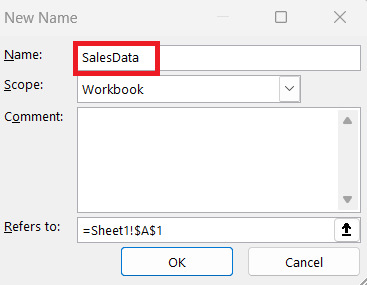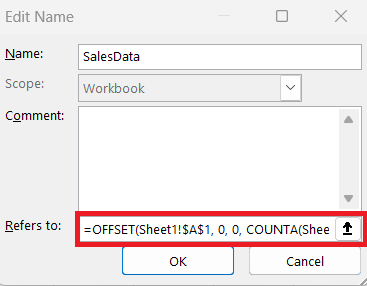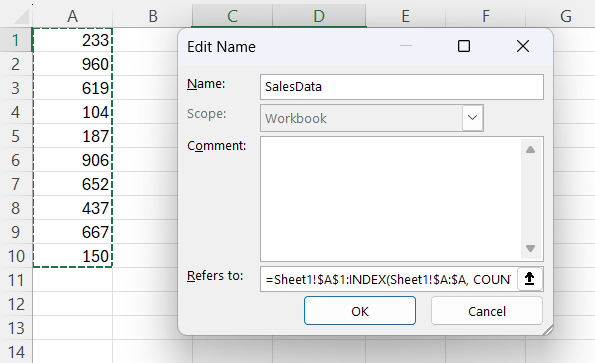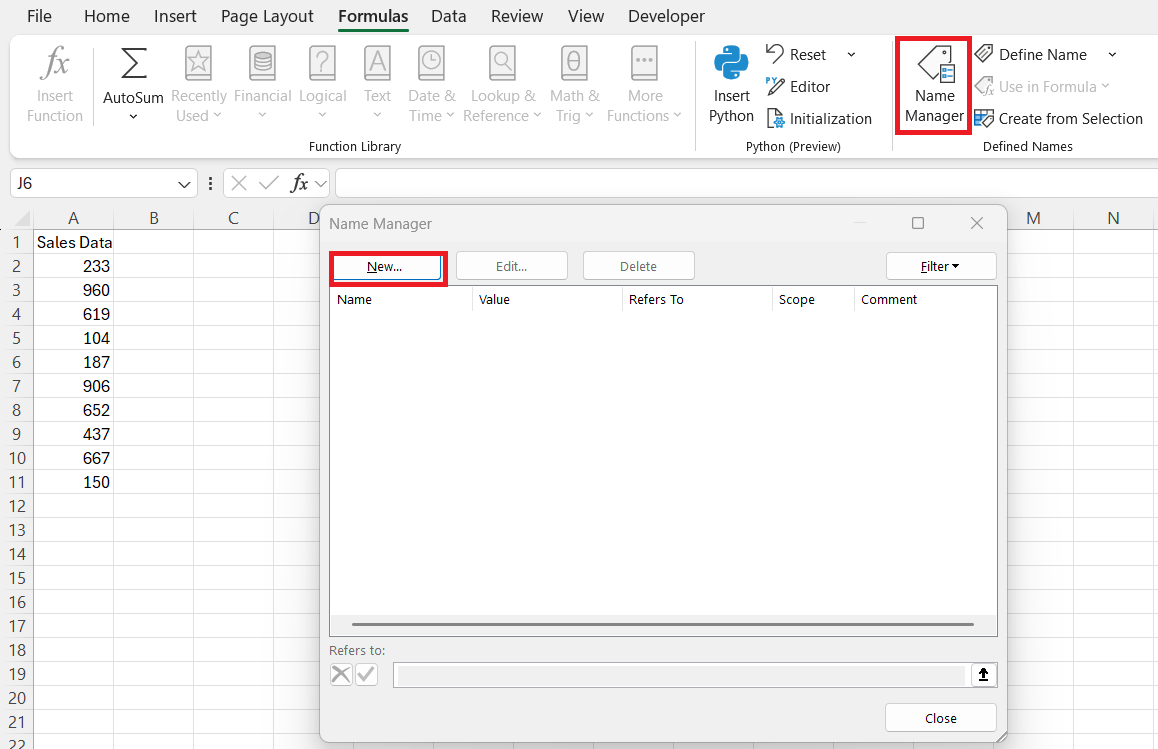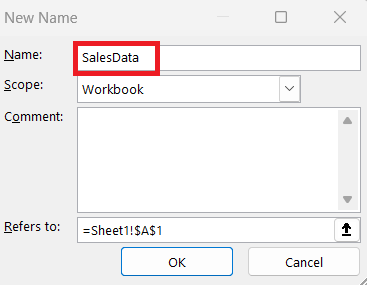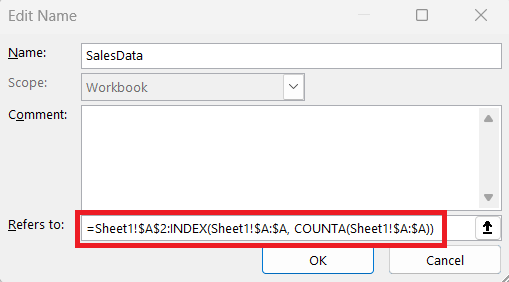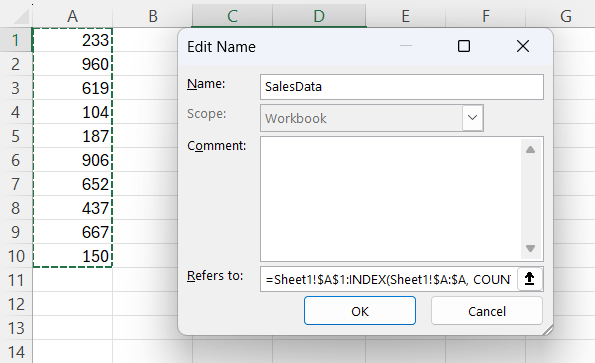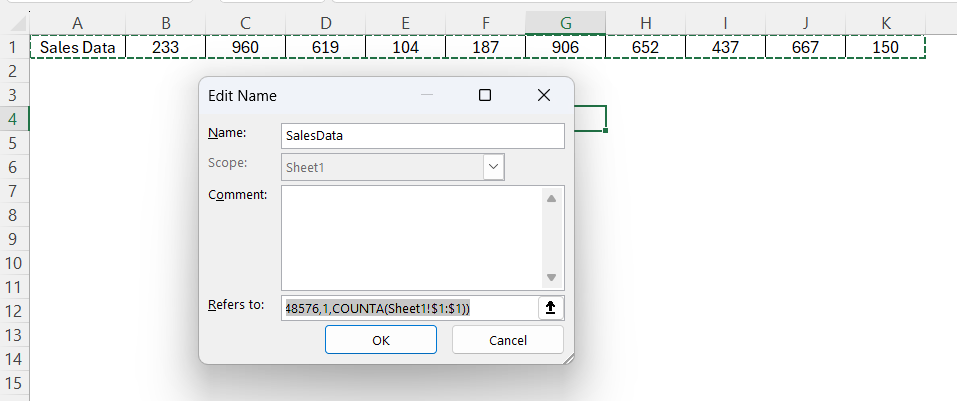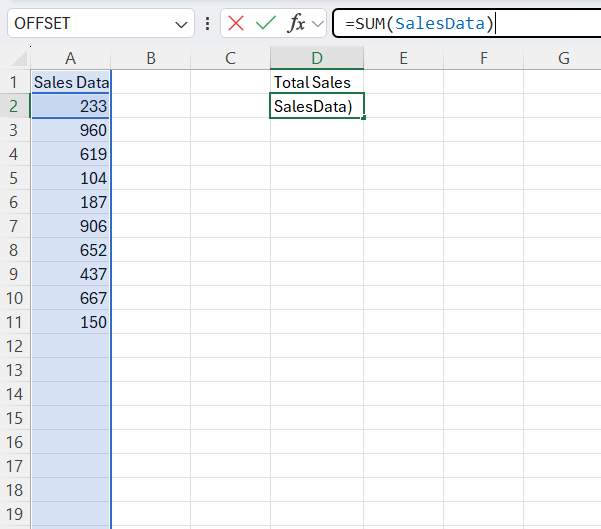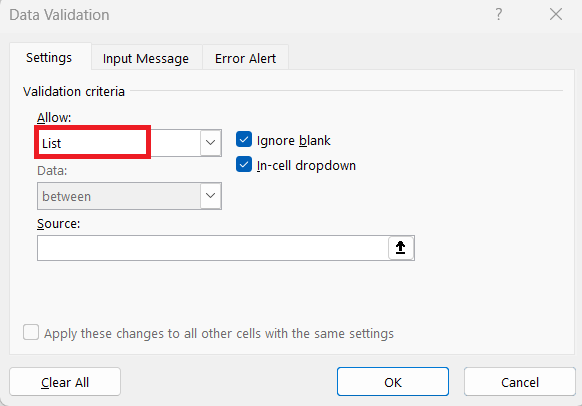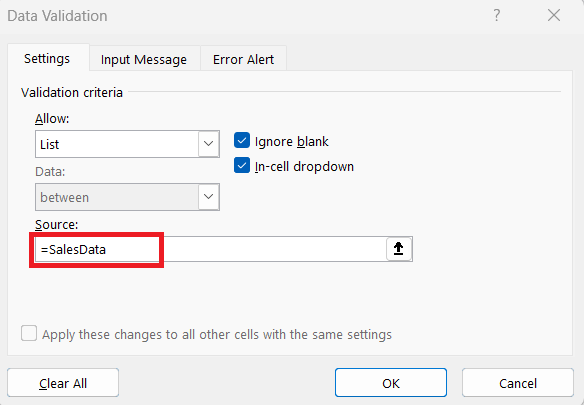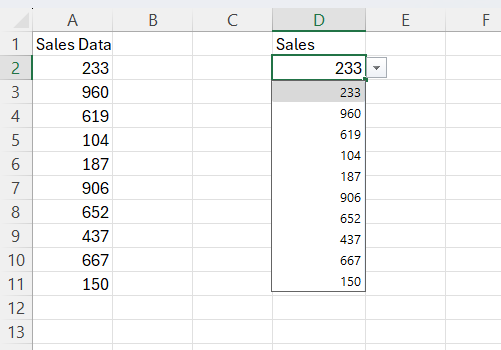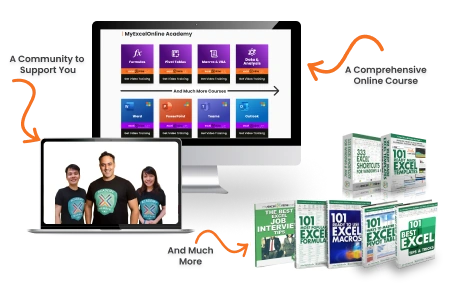In today’s data-centric world, efficiently managing and analyzing information in Excel is critical for productivity. One such feature that enhances this process is the Dynamic Named Range. This guide aims to demystify this powerful tool, providing insights into its advantages and practical applications.
By the end of this guide, you will have a solid understanding of how to create, use, and troubleshoot dynamic name range, empowering you to make the most out of Excel’s capabilities.
Key Takeaways:
- Dynamic Named Ranges in Excel automatically expand or contract based on data, making them highly adaptable.
- They improve efficiency by reducing manual updates and ensuring formulas, charts, and reports stay current.
- The OFFSET function helps create dynamic ranges but can be volatile, while INDEX offers a more efficient alternative.
- Dynamic Named Ranges enhance drop-down lists, automate reporting, and streamline data analysis.
- Using them wisely prevents performance issues in large datasets and maintains Excel’s responsiveness.
Table of Contents
Understanding Dynamic Name Range
What is a Dynamic Name Range?
A Dynamic Named Range in Excel is a range of cells defined with a name that can automatically expand or contract to include new data entries. Unlike static ranges, dynamic named ranges adjust their size based on the data they contain, making them highly adaptable.
This feature utilizes functions such as OFFSET or INDEX to create references that update automatically when you add or remove data. By allowing you to incorporate changes in your datasets seamlessly, dynamic named ranges are particularly useful for maintaining accurate and up-to-date formulas, charts, and reports.
Benefits of Using Dynamic Named Ranges
Dynamic Named Ranges offer a multitude of advantages that significantly improve data management and analysis in Excel. Here are some of their key benefits:
- Automatic Updates: They automatically adjust the range size when data is added or removed, minimizing the need for manual updates. This feature is especially useful in charts and formulas, ensuring they always reflect current data without errors.
- Efficiency: By reducing manual interventions to update references, they save time and lower the chances of mistakes. This efficiency can streamline workflows and make data processing more straightforward.
- Flexibility: These ranges can adapt to varying volumes of data seamlessly. Whether your dataset expands or contracts, the dynamic range accommodates these changes without requiring additional configuration.
- Improved Readability: Assigning descriptive names to ranges makes formulas more understandable. Instead of deciphering complex cell references, names like “SalesData” or “InventoryList” provide clarity about the data being used.
By integrating dynamic named ranges, users can significantly enhance the accuracy and effectiveness of their data handling in Excel.
Creating Dynamic Named Ranges
Utilizing the OFFSET Formula
The OFFSET formula in Excel is a versatile tool for creating dynamic named ranges. It enables ranges to adjust automatically as data changes, making it ideal for datasets that grow or shrink over time. The standard syntax for OFFSET is =OFFSET(reference, rows, cols, [height], [width]).
Here, ‘reference’ is the starting cell, while ‘rows’ and ‘cols’ specify how far to move from this starting point to define the first cell in the range. ‘Height’ and ‘width’ determine the size of the resulting range.
Here’s how you can utilize the OFFSET formula to create a dynamic named range:
STEP 1: I click on Formulas > Name Manager > New.
STEP 2: In the New Name dialog box, enter a name (e.g., SalesData).
STEP 3: In the Refers to field, type the following formula:
=OFFSET(Sheet1!$A$1, 0, 0, COUNTA(Sheet1!$A:$A), 1)
Sheet1!$A$1: The starting cell of my data.0, 0: No row or column offset.COUNTA(Sheet1!$A:$A): Counts the number of non-empty cells in column A.1: The range width is 1 column wide.
STEP 4: Click OK to save the named range.
By understanding and applying the OFFSET formula, you can efficiently manage data ranges that require constant updates without manual intervention, making your Excel sheets powerful tools for data analysis.
Implementing the INDEX Function
The INDEX function is an efficient alternative to OFFSET for creating dynamic named ranges in Excel, especially given its non-volatile nature, which means it avoids unnecessary recalculations. The INDEX function syntax is =INDEX(array, row_num, [column_num]). When used for dynamic ranges, INDEX returns a reference to a cell within the specified ‘array’ based on the provided ‘row_num’ and optional ‘column_num’.
Here’s how you can implement the INDEX function to create a dynamic named range:
STEP 1: I navigate to Formulas > Name Manager > New.
STEP 2: In the New Name dialog box, enter a name
STEP 3: I type the following formula in the Refers to field:
=Sheet1!$A$2:INDEX(Sheet1!$A:$A, COUNTA(Sheet1!$A:$A))
- Sheet1!$A$2: Starting point of my data.
- INDEX(Sheet1!$A:$A, COUNTA(Sheet1!$A:$A)): Finds the last non-empty cell in column A.
STEP 4: Click OK to create the named range.
With this method, my named range updates automatically without excessive recalculations.
Similar to rows, you can also apply INDEX to create dynamic ranges that expand across columns. For instance, in a table with data starting at A1, using =Sheet1!$A$1:INDEX(Sheet1!$1:$1048576,1,COUNTA(Sheet1!$1:$1)) will adjust the range based on data added horizontally across row 1.
By leveraging the INDEX function, users can establish dynamic named ranges that adjust reliably with data changes and maintain optimal performance and accuracy in their Excel workbooks.
Application of Dynamic Named Range
Using a Dynamic Named Range in a Formula
Once I’ve created a dynamic named range, I can use it in formulas like:
=SUM(SalesData)
This sums all values in my dynamic range without needing to update the reference manually.
Applying a Dynamic Named Range in a Drop-Down List
I often use dynamic ranges in drop-down lists for data validation:
STEP 1: I click on Data > Data Validation.
STEP 2: In the Allow box, I select List.
STEP 3: In the Source field, I type:
=SalesData
STEP 4: Click OK, and my drop-down list is now dynamic!
Practical Applications and Examples
Automating Data Management
Automating data management in Excel using dynamic named ranges and tables can greatly enhance your workflow by reducing manual entry and improving accuracy. Here are some ways to utilize these features for effective automation:
- Seamless Data Updates: Dynamic named ranges and tables automatically adjust as data is added, removed, or modified. This ensures that all connected charts, reports, and analytical models reflect the most current information without manual intervention.
- Streamlined Reporting and Analysis: Automate recurring reports by linking your datasets to dynamic ranges. Reports will update instantly as data changes, speeding up the decision-making process and ensuring accuracy with every data refresh.
- Workflow Efficiency: Use visual basic for applications (VBA) in conjunction with dynamic ranges to develop macros that perform repetitive tasks. This can include data cleanup, formatting, and consolidation—tasks that, when automated, free up valuable time.
- Reduced Errors: Automated systems reduce the risk of human error associated with manual data updates. Dynamic named ranges adjust all associated references seamlessly, ensuring calculations and references remain correct as the dataset changes.
- Practical Example: Consider a sales team tracking weekly sales data. By linking their spreadsheets to a dynamic named range or table, they can automate the reporting of sales trends and forecasts, ensuring that any new data automatically updates analytics and dashboards without additional input.
Incorporating automation through dynamic named ranges and tables not only elevates the efficiency of data management tasks but also enhances overall productivity by maintaining data integrity and freeing up resources for more strategic activities.
Enhancing Reporting Capabilities
Enhancing reporting capabilities in Excel becomes more feasible and effective with the use of dynamic named ranges. These capabilities can transform data presentations and analytical insights. Here’s how dynamic named ranges can improve your reports:
- Consistent Data Range Integration: With dynamic ranges, you ensure that any new or supplementary data is immediately reflected in reports without needing manual updates. This guarantees consistency across all report elements, from charts to pivot tables.
- Improved Visualization: Dynamic named ranges automatically update graphical representations, such as charts and graphs, to accurately display the latest data trends. This dynamic aspect ensures your visuals are always relevant and informative.
- Data Transparency: Using named ranges and tables with structured references enhances the transparency of calculations within reports. Readers can better understand the source and relevance of the data, making reports more accessible and credible.
- Simplified Maintenance: Automating report updates with dynamic named ranges drastically simplifies the process of report maintenance. As your underlying data grows or changes, your reports remain current and applicable without extra effort.
- Practical Illustration: Imagine preparing a monthly performance dashboard for a marketing campaign. By using dynamic named ranges, each KPI metric, sales data, and customer interaction chart can update automatically with every new data entry, ensuring the report is always ready for timely presentation.
Implementing dynamic named ranges in reporting not only facilitates seamless updates and visual accuracy but also enhances the overall value and impact of your reports, ultimately aiding informed decision-making processes.
FAQs
What is a dynamic range in Excel?
A dynamic range in Excel is a flexible cell range that automatically adjusts its size based on the data it contains, expanding or contracting as new data is added or removed. This feature ensures that all related formulas, charts, and reports stay up-to-date without manual interventions. Dynamic ranges are often created using functions like OFFSET, INDEX, and table structures.
Can dynamic named ranges be used with charts?
Yes, dynamic named ranges can be used with charts in Excel. By defining a dynamic range for the chart’s data source, the chart updates automatically when you add or remove data. This functionality simplifies the maintenance of charts, ensuring they always reflect the latest dataset without manual adjustments.
How do dynamic named ranges affect workbook performance?
Dynamic named ranges can affect workbook performance, particularly when using volatile functions like OFFSET, which recalculates with every spreadsheet change. This can slow performance in large datasets. However, using non-volatile functions like INDEX can mitigate this, providing a balance between dynamic functionality and efficient performance.
Are there limits to using dynamic named ranges in Excel?
Yes, there are limits to using dynamic named ranges in Excel. They can become complex to manage in very large datasets, especially when using volatile functions like OFFSET, which can slow down performance. Additionally, excessive complexity in nested formulas might make them difficult to debug and maintain, leading to potential errors in data management.
John Michaloudis is a former accountant and finance analyst at General Electric, a Microsoft MVP since 2020, an Amazon #1 bestselling author of 4 Microsoft Excel books and teacher of Microsoft Excel & Office over at his flagship MyExcelOnline Academy Online Course.


